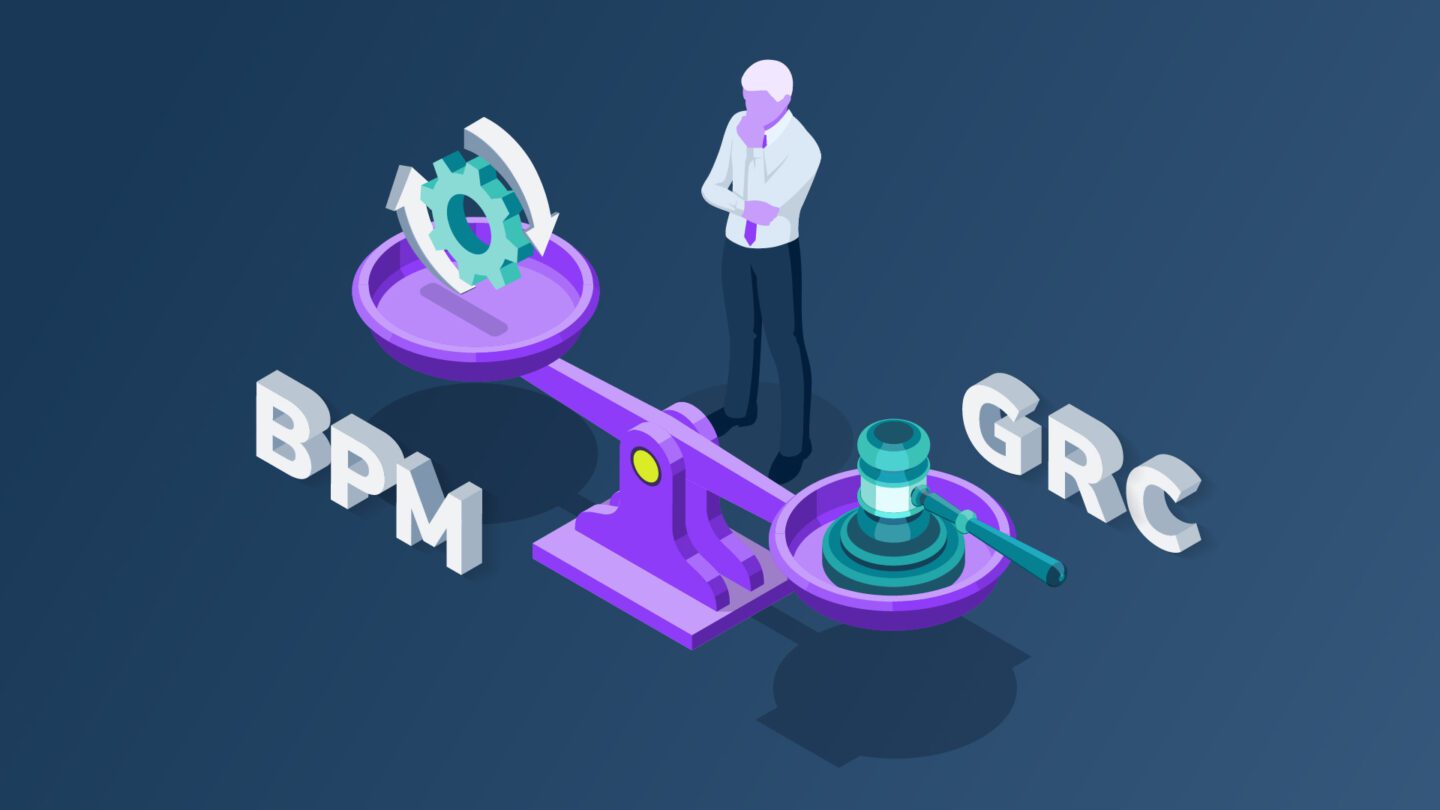Striking the Right Balance: BPM and GRC in Today’s Challenging Business Landscape
Achieving integration between Business Process Management (BPM) and Governance, Risk, and Compliance (GRC) is key to optimizing operations, enhancing compliance, and ensuring sustainable success in the fast-paced business landscape.

In the fast-paced world of business, the need for adaptation and transformation is constant. A myriad of factors, both external and internal, are driving companies to change their operations, processes, organizational structures, and IT systems. Whether it’s the buzzwords of ESG, cost pressures, generative AI, regulatory compliance, or operational resilience, it’s clear that modern businesses are navigating a complex landscape.
One notable area that demands attention is Governance, Risk, and Compliance (GRC). In recent times, regulatory compliance and operational resilience have emerged as critical aspects for businesses of all sizes. In fact, Michael Rasmussen, often referred to as “The GRC Pundit,” has described it as a Tsunami of Regulatory Change that is sweeping over organizations.
The Open Compliance Ethics Group (OCEG), credited with originating the concept of GRC, emphasizes the integration of work across various departments within a company, such as legal, risk, HR, IT, finance, and affected lines of business. Achieving this integration necessitates a common platform that serves as a foundation for communication among stakeholders who speak different “languages.” Surprisingly, processes themselves can play a central role in this orchestration.
Many process descriptions already include GRC-relevant elements, and there is room for improvement by incorporating missing ones. The key focus areas within these processes are related to risk, control, policy, and regulatory management. These elements are interconnected, not only among themselves but also with BPM-related artifacts, such as IT systems, organizational elements, and documents.
So, how do we strike the right balance between process performance on one side and risk and compliance on the other? Let’s delve into the relevant items that need consideration:
1. Risk Management
The journey begins with the identification and documentation of risks relevant to the company. Creating risk libraries organized by different aspects and categories provides clarity on the current status and forms the basis for discussions with stakeholders from various departments. It’s not just the responsibility of the risk management team but also a collaborative effort with lines of business to collect their insights. Reference catalogs and even AI can assist in collecting and identifying typical input.
Linking these risks to the business context, including processes, organizational elements, and IT systems, is essential to define responsibilities. This involves determining ownership and identifying individuals responsible for assessing these risks. It is crucial to ascertain the most relevant risks within the company, lines of business, or specific locations. Additionally, documenting existing risk mitigation measures, controls, policies, and connections to relevant regulations is imperative.
Assessing risks can involve various methods, whether quantitative or qualitative, and considering multiple dimensions such as financial aspects, reputation, and ecological concerns. Defining rules for executing assessments and subsequent actions, like risk appetite, becomes the foundation for operational execution.
2. Control Management
Understanding which controls are already in place is vital to evaluate associated risks. Controls are closely tied to processes and operations within the company and can be implemented in application systems. Controls can be preventive or detective and are not confined to the processes where the risk originates.
Discovering new controls or enhancing existing ones can benefit from reference content and the utilization of AI. Once again, assigning and documenting responsibilities is essential to reveal any blind spots. Ownership is the key to control management.
While documenting which controls mitigate which risks is a crucial first step, regularly verifying if controls are working as intended is equally important. Control testing provides essential information in this regard. Process mining can play a pivotal role in supporting these tasks, and it can even facilitate automated execution.
3. Policy Management
Policies, in this context, are instructional documents outlining rules and procedures for mitigating risks within the company. Policy management comprises two main steps: policy roll-out and regular policy review. These documents often involve multiple stakeholders in their generation and approval.
Some policies may require a simple publication, while others necessitate confirmation of comprehension or even attestation of adherence by employees. Regular checks ensure that policies remain relevant and are updated or retired when needed.
4. Regulatory Management
In the realm of laws and regulations, a wide array of topics is forcing companies to take action. Some are relevant to all companies, while others are specific to certain industries or regions. Examples include sustainability, ESG, DORA, data protection, and 3rd party risk management, among others.
Compliance with legal requirements is crucial for companies to avoid potential fines and damage to their reputation. To ensure compliance, having an overview of relevant regulations and defined responsibilities is essential. This transparency is crucial for understanding the business context and its connections to GRC elements.
Adapting to changes in regulations, whether new versions or updates, is an ongoing requirement that should be handled with the utmost professionalism.
As you can see, the activities in GRC should not be siloed but integrated into a coherent system. Collaboration among stakeholders is only successful when there is a common foundation that eliminates redundancies and optimizes assessment activities.
Process mining serves as a powerful tool for documenting the conformance of executed processes with the business blueprint. It helps to initiate mitigating actions before issues can harm the company. Access to information is key, whether it’s for risk managers, compliance managers, or process managers.
By fostering transparency and aligning stakeholders, you can effectively navigate the complex landscape of GRC. In the end, the goal is to ensure that processes are not only optimized for performance but also fully compliant with defined structures, regulations, and risk mitigation strategies.
In conclusion, striking the right balance between BPM and GRC is crucial in today’s challenging business environment. The integration of these critical aspects is not just a necessity but an opportunity to streamline operations, enhance compliance, and drive sustainable success in the ever-evolving world of business.